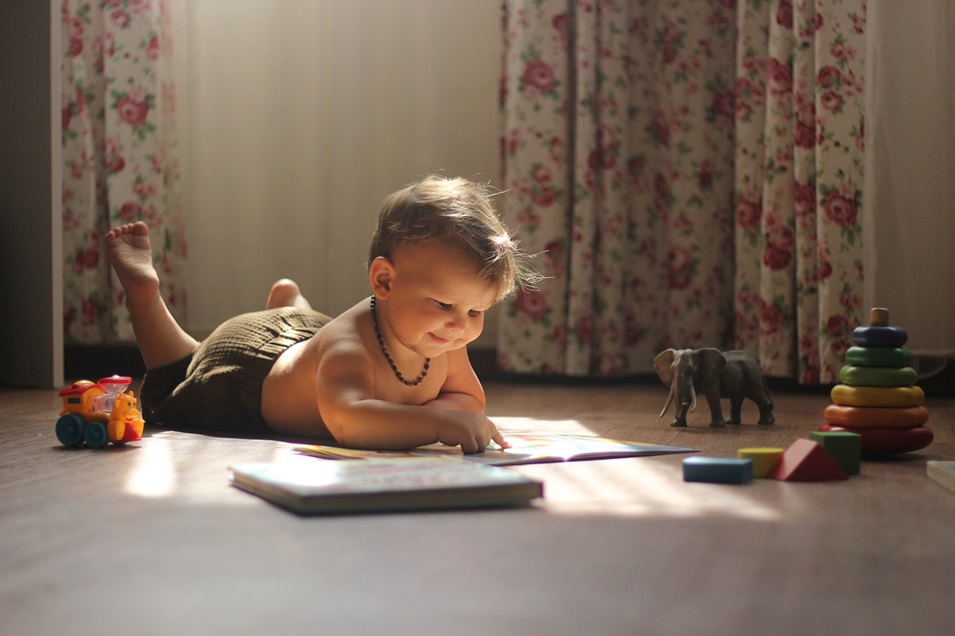What Toys Does Your Child Really Play With?
If you’re like most mothers, your child’s toys have taken over your living room. If not your living space, your tot’s bedroom or playroom are certifiable disaster zones. You may be overwhelmed, depressed, or angry that your home doesn’t look like those on social media. But you don’t know what to do about it. If this sounds familiar, you’ll find this article helpful.
As an evaluator for early intervention services, I have visited many homes. One percent of them (maybe) look anything like Instagram or TikTok pics. We all know social media depicts an alternate reality, yet we still try to measure up, don’t we?
When my babies were young, I hated the clutter and chaos each day brought. But it was so overwhelming some days I wouldn’t even pick up toys. “Why?” I thought. “It’ll look like this again tomorrow!” Or, I’d find myself shopping for more cute storage containers to put it all in.
But more storage didn’t matter. It wouldn’t take long, and once again, I couldn’t close the toy box or shove one more thing on those cute shelves that looked nothing like I’d dreamed they would. In my final moments of despair to gain control over the chaos, I began what I now call “black bag therapy.”
Little did I realize the actions taken that fateful day were not only good for my mental health but healthier for my children’s growth and development, as well. Research now proves it!
Are you interested in trying my black bag therapy approach?
Do This First
Take some time—a few days or weeks—and watch your child at play. What toys do they interact with, and which ones do they pull out of the container and toss? Remember that it’s normal for babies and some toddlers to dump and fill containers. Young children learn to take things apart before they master putting things together. That’s what they are learning. That’s not the type of play I’m talking about.
When I ask moms about their child’s play, most say, “Oh, he loves balls and cars, but he never looks at books,” or “She loves books and coloring. But I never see her climbing or tossing balls.” Moms know what their babies play with.
My boys had tons of those awful Happy Meal toys. You know, the ones that are a must-have when you eat out, but your baby quickly loses interest in them. Those!
As you watch your baby play, take note of the toys your baby loves most and those you wish they’d show more interest in, like books.
Do This Next
While your baby is napping or visiting grandma’s house, put all the toys your baby rarely plays with into a black plastic garbage bag. Especially all those Happy Meal toys that you regret buying.
Then, hide that bag so your baby can’t find it. I would put mine in the attic or a locked closet.
Do not mention those toys to your baby! If they ask for something, say, “It’s not here. Let’s play with ____________.” Redirect your baby to a preferred item, like a book or a favorite toy.
Thankfully, most young children have short attention spans and will quickly forget about what’s missing. They may not even notice.
Finally
Embrace the routine of rotating toys. For example, in a few months, bring out one or two of those toys you stashed in the black bag and put a few current toys in.
Please don’t do this when your child can see you. If you do, expect meltdowns!
Don’t worry. Fewer toys are good for your baby.
Current research recently proved children played longer with each toy when fewer toys were available. For example, if you want your baby to look at books more often, have books available and fewer other toys that distract their attention away from the books.
Here’s what I find in all those homes I visit: many young children pick up and handle a lot of toys each day. However, they don’t explore each one long enough to develop patience and master what each toy offers. For example, they scatter blocks on the floor but don’t build or assemble.
Since most of us don’t know what youngsters should play with at each age, click here for a helpful list.
Many of today’s children quickly get overwhelmed and tantrum when the toy box is empty and they “can’t find anything to play with.” Too many prefer passive entertainment, such as watching videos or TV, versus playing with toys. If screens are readily available, expect your child to choose them over better choices.
Does your child play with all those toys in your home? Click To Tweet Probably not. After carefully studying what toys your baby plays with, incorporate toy rotation (aka black bag therapy) into your life. Visual disorder (clutter) can distract your baby from richer play experiences.


The Conversation
I did this monthly in my preschool classroom with toys and books. Each time I rotated, my students played more intentionally and quietly. They’d get bored with their toys if they were ALL available all the time. While a toy not seen for a while seems brand new.
Good advice here, Ginny Cruz. Thank you!
Thanks! I didn’t even think about teachers doing this technique, but it makes sense. I’ve always admired how organized classrooms help young children learn how to put things where they go. We parents can learn a lot from preschool teachers!